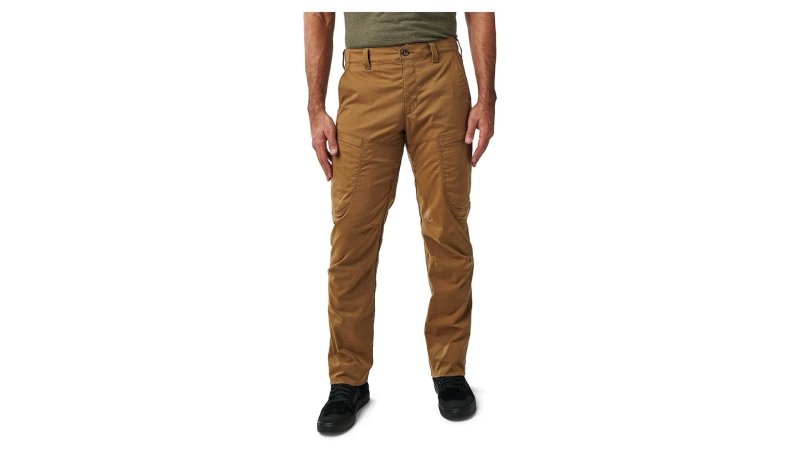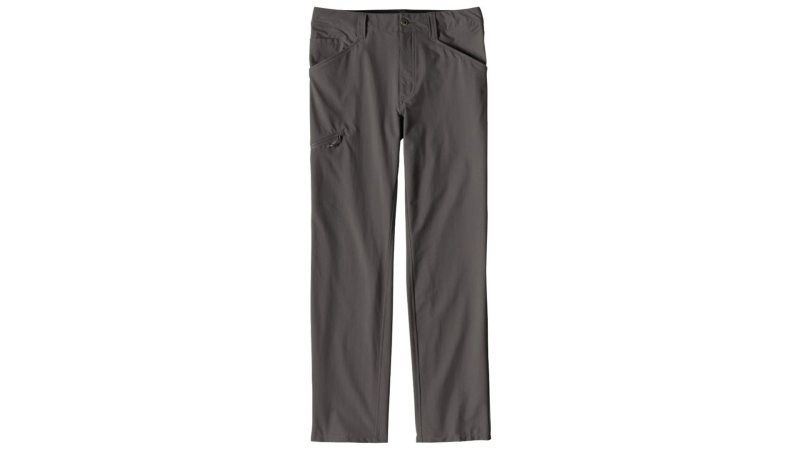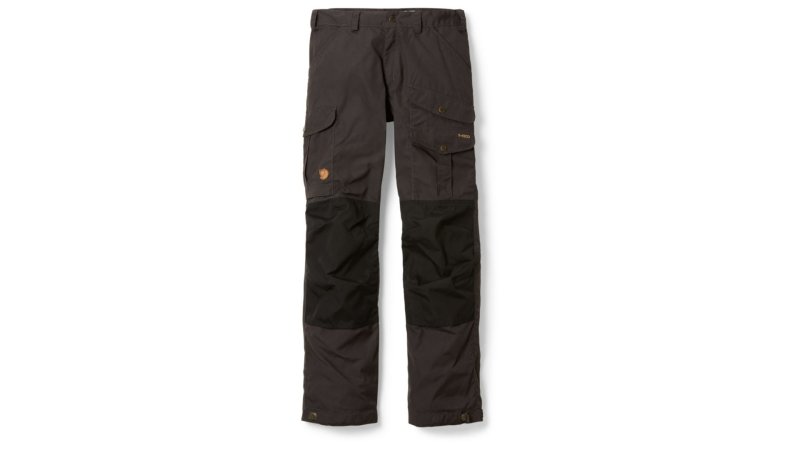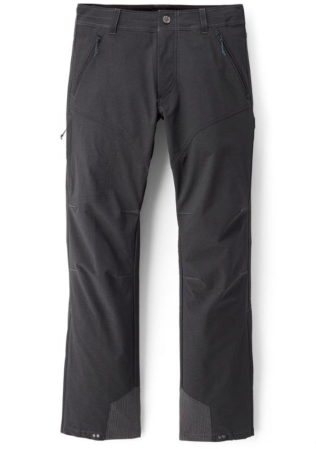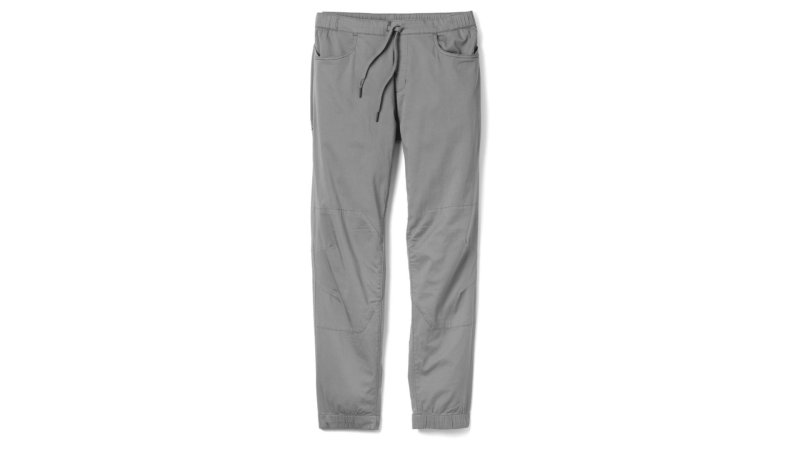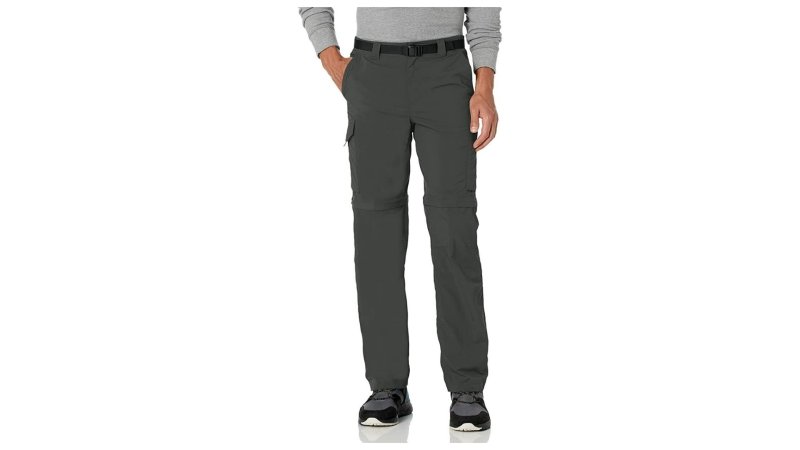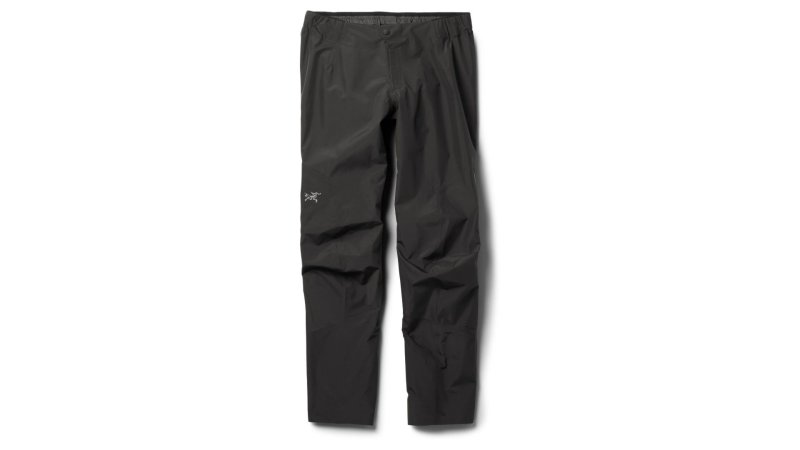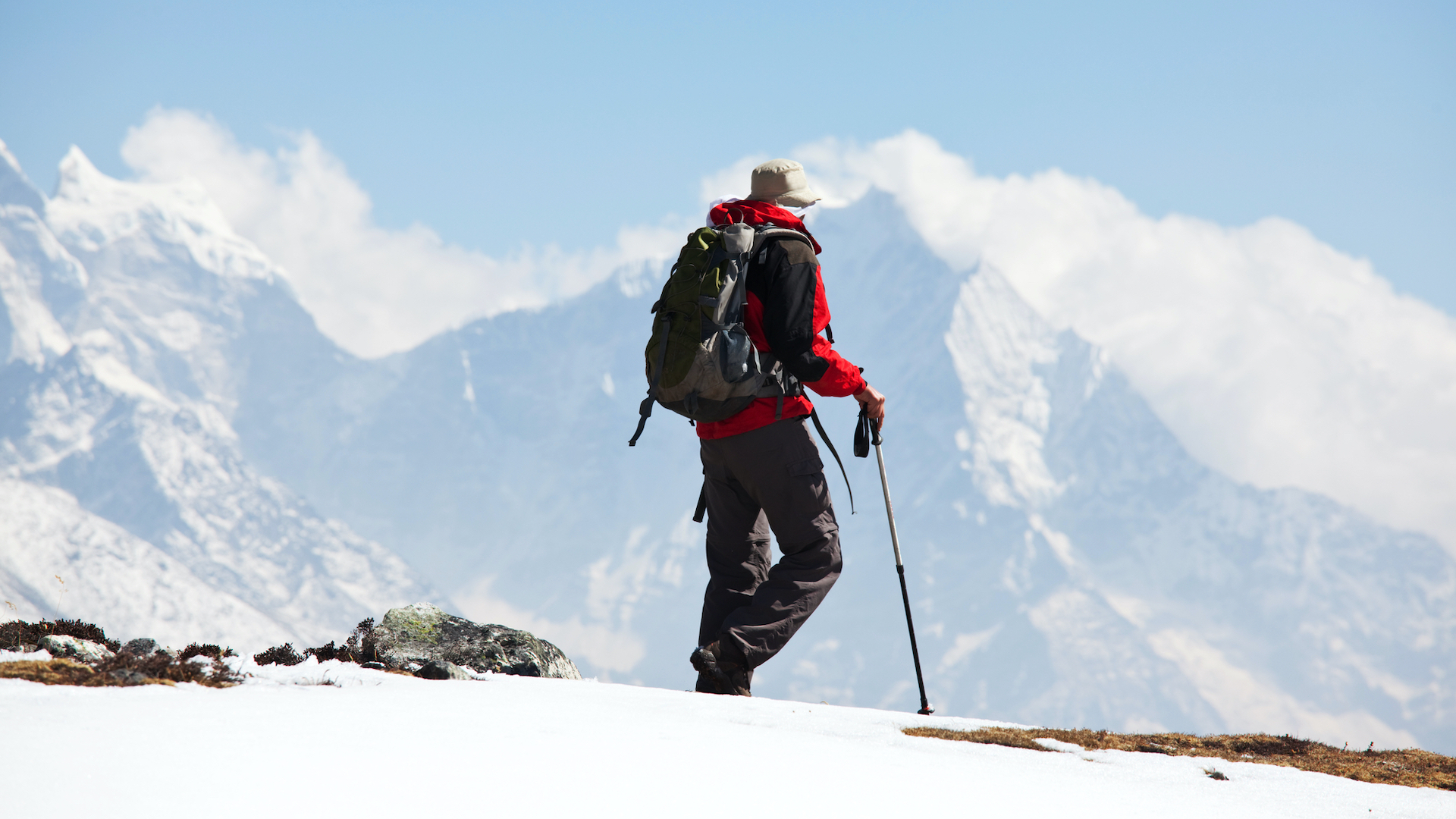

We may earn revenue from the products available on this page and participate in affiliate programs.
Some of you may be surprised to learn that the best hiking pants for men are not heavy utility uniform trousers. After logging more miles than I care to remember in pants that felt like canvas lined with sandpaper, I’m thrilled to report that you don’t have to endure such trauma on your own time.
Good hiking pants are light, strong, comfortable, and can keep you dry. They come in all kinds of styles so you can find the perfect pair for through hikes, day hikes, hunting trips, days at the range, or even the nine-to-five slog. Some of them are so good that we wouldn’t blame you if they became your new go-to attire.
The problem is that there are a lot of manufacturers selling cut-rate pants that don’t do what they’re supposed to do (or fall apart way too soon). We sorted those out for you, so all you’ll see on this list are the best of the best from our favorite brands.
Best Overall
5.11 Tactical Ridge
Pros
- Casual styling with aggressive performance
- Treated with Teflon to protect against stains
- Hidden stash pockets for valuables
- Large loops accommodate wide belts
Cons
- Cotton blend isn’t ideal in cold weather
- Likely to shrink in the wash
- Not particularly lightweight for hiking pants
Product Specs
- Fabric: 67 percent polyester, 33 percent cotton
- Colors: kangaroo, khaki, black, dark navy, ranger green
- Sizing: waist x inseam
Best Value
Patagonia Quandary
Pros
- Incredibly flexible through the full range of motion
- Treated to resist water and ultraviolet rays
- Made from 94 percent recycled materials
- Very light and breathable
Cons
- Not a lot of pocket options
- Slim fit won’t work for everyone
- Zippered closures on pockets are hit or miss
Product Specs
- Fabric: 94 percent recycled nylon, six percent spandex
- Colors: ash tan, forge grey, industrial green
- Sizing: waist x inseam
Editor’s Choice
Fjallraven Vidda Pro
Pros
- Reinforced fabric bolsters high-wear areas
- Lots of pockets, all above the knees
- Expandable cuffs to fit over boots
- Extremely durable and surprisingly comfortable
Cons
- One of the heavier options on this list
- Significantly more expensive than the alternatives
- Be mindful when converting to Euro sizing
Product Specs
- Fabric: 65 percent polyester, 35 percent cotton
- Colors: black/black, chestnut/timber brown, dark grey/dark grey, dark navy/black, dark olive, green/dark grey, laurel green/deep forest
- Sizing: Euro
Best Cold-Weather Hiking Pants
Kuhl Klash
Pros
- Built to be warm with room for a base layer
- Gusseted crotch and knee darts increase flexibility
- Reinforced cuffs open to cover snow boots
- Premium build quality outlasts most hiking pants
Cons
- Only available in one color
- Boot cut might feel baggy in warmer months
- Cargo pocket space is limited
Product Specs
- Fabric: 72 percent nylon, 20 percent polyester, eight percent spandex
- Colors: Gotham gray
- Sizing: waist x inseam
Best Hiking Pants for Climbing
Black Diamond Notion
Pros
- Unbeatable flexibility and range of motion
- Reinforced knee panels increase durability
- Super soft and light
- Drawstring waistband offers a perfect fit
Cons
- All-cotton fabric isn’t great for moisture control
- Pocket space is limited
- Sizing is less precise than using waist and inseam measurements
Product Specs
- Fabric: cotton
- Colors: ash, black, dark curry, raging sea, sergeant
- Sizing: extra small, small, medium, large, extra-large
Best Hiking Pants for Trail to Town
Kuhl Silencr
Pros
- Genuine trail-worthy capability and toughness
- Stylish and understated around town
- Extra pockets are tastefully discreet
- Kuhl build quality is tough to beat
Cons
- Being great at two things means being excellent at neither
- Color selection is limited
- A normal button would be better than this waist snap
Product Specs
- Fabric: polyester
- Colors: carbon, raven, storm khaki
- Sizing: waist x inseam
Best Convertible Hiking Pant
Columbia Silver Ridge
Pros
- Pants and shorts in one
- Lightweight, breathable, and comfortable
- Massive color selection available
- Comes with a belt
Cons
- Not as robust as our other picks
- Sizing runs small and slim
- Convertible zippers are one more thing to break
Product Specs
- Fabric: nylon
- Colors: more than 30 colors available
- Sizing: waist x inseam
Best Rain Pants for Hiking
Arc’teryx Zeta SL
Pros
- Gore-Tex is the waterproof standard
- Light, breathable 40-denier nylon
- Comes in large enough sizes to fit over other layers
- Zippers on cuffs fit over shoes and boots
Cons
- No pockets or belt loops
- Only available in black
- Very expensive for a pair of rain pant
Product Specs
- Fabric: nylon
- Colors: black
- Sizing: small, medium, large, extra-large, extra extra large
Why you should trust us
We’ve done our share of travel by foot. Our staff of gear junkies has completed countless military training evolutions, combat patrols, and hiking trips on our own time. We even have writers with experience hiking North America’s most famous wilderness areas and interstate trails. That know-how informs gear guides like the ones on socks, boots, and watches built specifically for the trail. We certainly wouldn’t subject our own legs to substandard pants, so we demand the best for you, too.
Types of hiking pants for men
All hiking pants are designed to be functional, but that can take on a few different meanings. Rather than narrowing your search down to a specific brand, focus on what you plan on doing in your new hiking pants. Hikes that involve climbing, mountaineering, or tactical training will require different pants than hikes that are strictly about walking from point A to point B.
Tactical pants
If your hikes involve any kind of firing range, small unit tactics, or hunting permit, tactical pants are probably the best bet when it comes to hiking pants. The foundation is still there––they’re lightweight, breathable, and built to last. As with any specialized hiking pant, the devil’s in the details.
Tactical pants prioritize range of movement. In addition to walking and running, they need to facilitate the more dynamic movements of climbing over obstacles and getting into various standing, kneeling, or prone shooting positions. They may include stash pockets for small items like keys and identification tags. Many tactical pants are designed for government contractors, so they tend to be understated and appropriate for wear around town.
Climbing pants
Would you rather hike in climbing pants or scale a cliff in generic hiking pants? That’s a no-brainer. If your hikes involve travel that’s more vertical than horizontal, you need dedicated climbing pants.
Pants built for rock climbing take mobility to an extreme to account for the physical feats you perform every time your feet leave the ground. They also need to be lightweight and strong enough to hold up to days of being scraped along a rock face. Pockets are less important since you’ll likely be carrying nothing more than a chalk bag. Fit is up for debate. Some climbers like loose pants that flow with them, and others like tighter pants that stay out of the way.
Convertible pants
Laugh it up; we can hear the jokes already. Is the world ready for the onslaught of sex appeal that comes from a grown man turning his pants into shorts? Maybe not, but convertible pants serve a legitimate purpose in the field, whether people admit it or not. If that’s your thing, we have you covered (or uncovered, depending on how you wear them).
Convertible pants are great for climates that experience fluctuating temperatures. If you’ve ever used your car’s heater and air conditioning on the same day, you know the feeling. Plenty of hikes start with frost on the ground and end with blazing sun. Convertible pants let you keep moving without digging a change of clothes out of your pack and carrying more gear than you need to.
Key features of hiking pants for men
Durability
Hiking gear has to be durable, and pants are no exception. The most comfortable pants with the best pockets won’t do you any favors if they rip apart a few miles into your first hike. You need clothing that can push through the underbrush, scramble up rocky inclines, and get dirty without missing a beat.
Modern fabrics achieve all of that while remaining breathable, flexible, and dry. They work like denim or canvas but feel more like athletic attire or pajama pants. Creating fabric that does both takes a lot of research and development, so you can expect to pay more than you would for normal pants. The tradeoff is worth it, though.
Moisture wicking
It doesn’t matter where you are in the world or what you’re doing; one priority that never changes is the need to stay dry. In warm regions, wet clothes can lead to chafing, bacterial growth, and even nasty conditions like trench foot. In colder climates, failure to stay dry can lead to hypothermia or frostbite in a matter of minutes.
Remember the old saying: cotton kills. Cotton is great for a lot of things, but wicking moisture away from your skin is not one of them. Cotton acts like a sponge and traps sweat and water against your skin. Wool and synthetic fibers do a vastly superior job of getting moisture off your skin and into the air, so they’re preferred in cold weather. They also dry out quickly and do a better job of staying clean.
Lightweight materials
Every ounce counts on the trail, and that doesn’t just apply to your pack. If you’re used to wearing a military uniform, jeans, or work pants, you’ll be shocked by how light a good pair of hiking pants can be. That difference is multiplied with every step, and you’ll feel the difference after a day of hiking.
One added benefit of having less material around your legs is improved breathability. When the hot air around your activated muscles has a chance to escape, your body will stay cooler and work more efficiently. A good pair of hiking pants will protect your legs against scratches and sunlight while feeling more like gym shorts than blue jeans.
Benefits of hiking pants
Protection
Why wear hiking pants in the first place if every other form of physical activity seems to be easier in shorts? The reality of hiking is surprisingly primal. Yes, getting your legs scratched by branches and rocks is a nuisance but, when you’re days away from a shower or medical attention, small cuts can become serious health risks surprisingly fast. A simple layer of fabric over your legs can be all the difference you need.
Sunlight is another factor. There’s a reason people in the world’s hottest regions cover their skin from head to toe rather than airing out. Keeping the sun’s ultraviolet rays off your body protects against sunburns and can actually help to keep you cool.
Range of motion
Bulldoggers like Luke Branquinho can pull off superhuman feats of strength in a pair of jeans, but mortals like us are better served by something a little more forgiving. Hiking is an endurance sport, so a tiny improvement in flexibility makes each step easier and leaves you with more energy for the coming day.
Synthetic fabrics are especially good at stretching so your legs can exercise their full range of motion. That’s a big perk when you’re climbing over logs or rocks and don’t have to worry about blowing a seam. Many of the hiking pants on this list incorporate spandex into their blend of materials to give you total flexibility without sacrificing durability.
Comfort
Comfort seems like a dirty word in a lot of professional circles. We’re told not to get comfortable in our jobs and to avoid comfort-based decisions. That’s well and good, but there are times when being comfortable is a real advantage. Nobody likes the sergeant major who yells at people for wearing beanies and gloves when it’s snowing.
Hiking pants are built to be comfortable while you do inherently uncomfortable things. Hiking to a campsite or training on your own time are arduous as it is, and getting to the end of the day dehydrated and covered in rashes doesn’t make you any better off. Let advanced materials keep you cool, dry, and effective.
Pricing considerations for hiking pants for men
Budget
A quick internet search for hiking pants will flood your screen with hiking pants priced at less than $75. Most of the options we found cost between $30 and $40, with some coming in at even less than that. We recommend shopping in this price range with a bit of skepticism, though.
Hiking pants have a big job to do. They need to be strong, light, and water-resistant. That’s hard to do on a shoestring budget. Be wary of claims that seem too good to be true. Are there inexpensive hiking pants that work just fine? Of course; the Columbia Silver Ridge is a perfect example of that. But you have to sort through a lot of imitators to find them and you’re probably better off going with a known entity like the ones on this list.
Mid-range
Of the seven hiking pants that made this gear guide, four fall into the $75 to $125 price range. This is where you’ll find popular brands like Patagonia, Black Diamond, and 5.11 Tactical. These are some of the most widely-used hiking pants in the great outdoors and that’s no accident.
We’re fans of these pants because they pack all the performance you’re likely to need. They stay cool and dry. They last a long time without being babied. They’re functional enough to wear on the trail and might even cut it as appropriate office attire. At the same time, they don’t cost any more than the pants you probably wear daily, and also leave room in your budget for other gear.
Premium
Once you get beyond $125 for a pair of hiking pants, you’re looking at premium clothes that are probably built for a very specific purpose. The extra money isn’t spent to get a designer label, it goes toward better materials and specialized features. Here’s where you’ll get into high-end brands like Kuhl and Fjallraven.
Hiking pants in this category tend to be built to handle harsher environments than most people encounter. They’re made for lengthy mountaineering trips that push gear to its limits. Our pick for best rain pants also falls into this price range and is actually the most expensive option here at nearly $250. For that price, you’ll get a pair of pants that can withstand the elements when other hiking pants tap out.
How we chose our top picks
A few key considerations that influenced our selection criteria were durability, lightness, water resistance, and specialized features. How each option goes about meeting those needs differs, allowing you to find what works best for you. This isn’t a one-size-fits-all issue.
We also prioritized manufacturers that have a solid reputation on the trail. Nobody wants to find out that their gear was a waste of money two days into a week-long hiking trip. Everything you see here has proven its worth in the real world and earned the support of thousands of customers — and our expert gear reviewers —in the process.
FAQs on hiking pants for men
You’ve got questions, Task & Purpose has answers.
Q. What’s the best fabric for hiking pants?
A. Your hiking pants should use fabric that’s some combination of durable, lightweight, breathable, water-resistant, and wind-blocking. Wool, polyester, and nylon are our preferred fabrics.
Q. What features should hiking pants have?
A. The best feature is quality construction. Look for lightweight, durable fabric that dries quickly. Beyond that, think about things like pockets, oversized belt loops, and the ability to zip off the bottom of your pants.
Q. Do I need hiking pants, outdoor pants, functional pants, or tactical pants?
A. These terms are pretty vague and there’s a lot of overlap. Plenty of people like to hike in tactical pants or wear hiking pants to work. Focus on the specific features you care about and don’t worry about the label.
Q. What cut is best for hiking?
A. Fit is a matter of personal preference, but most people prefer something with a little bit of extra room. Pants that fit loose in the legs tend to breathe better and rub less than tight-fitting pants. The exception to that rule is legging-style pants like base layers and some athletic pants.
Q. What insulation should my hiking pants have?
A. There is a time and place for insulated hiking pants, but we usually recommend something that’s three-season comfortable. Adding a base layer or outer layer to suit the weather is always an option and lets you get more use out of your clothing.
Q. Are compression pants good for hiking?
A. Tight-fitting athletic pants can be worn for hiking––Instagram has plenty of documentation to support that (although we’re skeptical about how many miles some of those people actually cover). Whether or not you go that route is a matter of personal style.
Our gear section
Scott Murdock is a Task & Purpose commerce writer and Marine Corps veteran. He’s selflessly committed himself to experiencing the best gear, gadgets, stories, and alcoholic beverages in the service of you, the reader.
